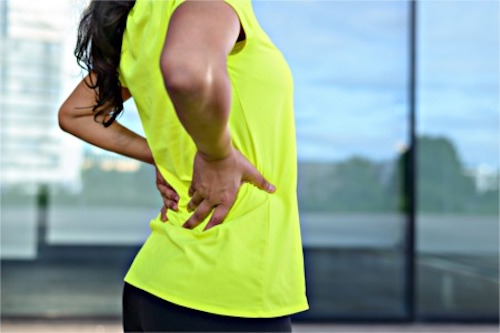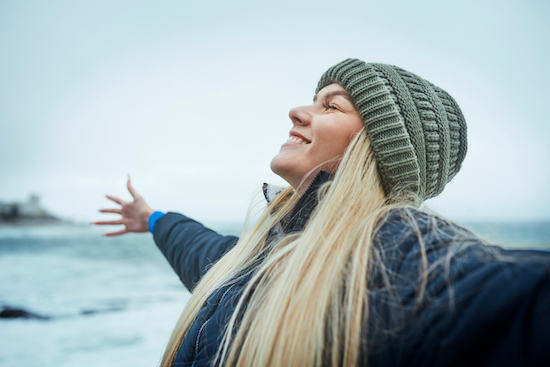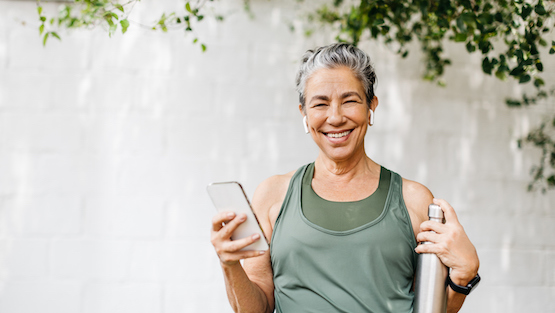Low back pain is miserable and it’s terribly common. In fact, back pain is one of the top reasons for seeing the doctor. And it has a long list of root causes: arthritis, disc and postural issues, sciatica, scoliosis, sitting too much, standing too much, too much exercise, not enough exercise, stress…
Yikes — you get the idea!

Though everyone’s body is different, the majority of people with low back pain can find real relief by practicing a simple sequence of targeted yoga poses. These individual postures can gently stretch tight areas and ease discomfort and muscle aches.
As you try these postures, you should always listen to your body so you can find the right physical movement for the relief you need from your low back pain.
Best yoga postures for low back pain
The postures below address low back pain in general. Practice each pose mindfully and with intention. Stay aware of the sensations you experience and maintain a commitment to breathe well throughout the sequence. Keep your mind open to the potential benefits that this practice can offer you.
Downward Facing Dog (Adho Mukha Svanasana)

Effects: Helps ease and stretch the tight back muscles and hamstrings that can cause low back discomfort by lengthening and decompressing the entire spine.
Start on your hands and knees, then tuck your toes under, press into the palms, and lift your hips up and back. Straighten the legs without locking your knees, press the thighs back, keep lifting the buttocks, and extend through the entire spine and both arms until you are in an inverted “V” shape. Relax your neck and let your head release gently between the upper arms. Breathe deeply directly toward the hamstrings and the muscles of your back body. Stay for at least several breaths, or up to several minutes — but keep breathing steadily in and out.
Sphinx (Salamba Bhujangasana)

Effects: Helps reestablish the natural lumbar curve and strengthens the back extensors muscles along either side of the spine. When these muscles are strengthened, it helps you avoid slumping and rounding your back, both of which contribute to back pain.
Lie on your belly and slide your forearms forward so that your elbows are aligned under your shoulders and your forearms are at right angles to the upper arms. Point the toes and press the tops of the feet firmly down on the floor. Engage the knees, quadriceps and buttocks, then draw the belly in and press the tailbone down toward your feet. Keep your neck long as you move your heart forward. Breathe deeply into your belly and bring your awareness to the gentle arch in your low back.
Lunge Pose (Anjaneyasana)

Effects: Stretches the hip flexors and releases tension in the front of the body and pelvis caused by too many hours sitting. Strengthening these weak, tight muscles helps correct imbalances in pelvic tilt, posture and surrounding tissues of the low back.
From hands and knees or Downward Facing Dog, step the right foot forward between your hands. Make sure the right knee is aligned over the ankle without going past it. Use blocks under the hands for more support and ease. Slowly drop the left knee onto a cushion or blanket. Notice the sensation in the front of the left leg from the quadriceps to the hip flexors and up to the tips of the hip points. Breathe deeply to stretch and release these areas, and then slowly and mindfully switch sides.
Supine Pigeon Pose (Supta Kapotasana)

Effects: Allows for a gentle and safe stretch of the hip rotator muscles and low back by releasing tension in the outer hips that interferes with mobility of the legs, hips and pelvis. This tension and stress often gets transferred to the low back and lumbar spine.
Lie on your back with both knees bent and pointing toward the ceiling. Place the left foot and ankle across the top of the right knee. Stay like this or draw your legs toward you and clasp your hands behind the right thigh. Encourage the left hip away from your body, keep both ankles flexed and breathe deeply into your left outer hip. Mindfully switch sides.
Reclining Big Toe Poses 1 and 2 (Supta Padangusthasana)

Effects: Releases stiffness in the low back and hips, and aligns the pelvis while providing a wonderful, safe stretch to the hamstrings and inner legs without compromising the natural curves of the spine.
You’ll need a yoga strap, belt or long scarf for this one.
- Pose #1: Lie on your back with the legs extended long on the floor. Bend the left knee and place the strap around the ball of your foot, extend the leg toward the sky and hold one end of the strap in each hand. Press your foot up into the strap and push down on the sacrum. Keep extending and anchoring the right leg to the ground, flex the right foot, and relax your shoulders. Breathe deeply into the back of the left leg.
- Pose #2: Do as above, then gently ease the raised left leg out to the left side, still holding the strap around the ball of your foot, while extending the right arm out to the right side like a wing. If necessary, place a block or bolster to the outer left thigh for support to keep it from going too far, and breathe into the inner left leg. Mindfully repeat the posture on the other side.
Supine Twist (Jathara Parivartanasana)

Effects: Strengthens and rotates the spine to relieve tension in the low back while toning the abdominal muscles and stretching the hips.
Lie on your back, bend your knees and extend your arms out to each side. Allow your legs to drop gently to the left and ease them down to the ground. You may add a blanket or bolster for support. Relax both shoulders onto the floor, keep your head and neck neutral or gaze along your right arm. Breathe deeply into the belly and the low back and then mindfully come back to a neutral position and switch sides.
Balance is key to wellbeing in both your physical body and your mind
Balance on all four sides of the body — front, back and each side — will bring better posture and minimize low back pain. Sometimes it helps to imagine an invisible line running down the middle of your body, with each sector of your body balanced evenly along that line throughout your practice.
A yoga practice can help:
- Build a strong core and a strong back to support the spine.
- Maintain the natural S-curve of the spine to support the even distribution of weight and preserve healthy, de-compressed discs.
- Stretch the hip flexors, rotators and the hamstrings to decrease any extreme pelvic tilt and create a healthy pelvic alignment.
If you sit for much of your day, try to change position frequently — cross your legs the other way, put a pillow behind your lower back, place both feet on the floor, stand up, walk around, etc.
Most of all, yoga allows you to release stress from your entire being. Studies show that stress is a major contributor to back pain that causes you to hold tension in this vulnerable area of your body. As stress levels increase, more pain will be present. Likewise, when stress is reduced, pain decreases.
The mind-body connection offered by yoga can helps us release the stress that we all face daily. Remain aware of the sensations in your body and use deep breathing to calm your over-stressed system. Every time you breathe out, you will let go of stress, tension and pain.
 |
Yoga helps minimize headaches too. See Kelley’s advice for what to do for headache prevention or when your headache has already started. |










